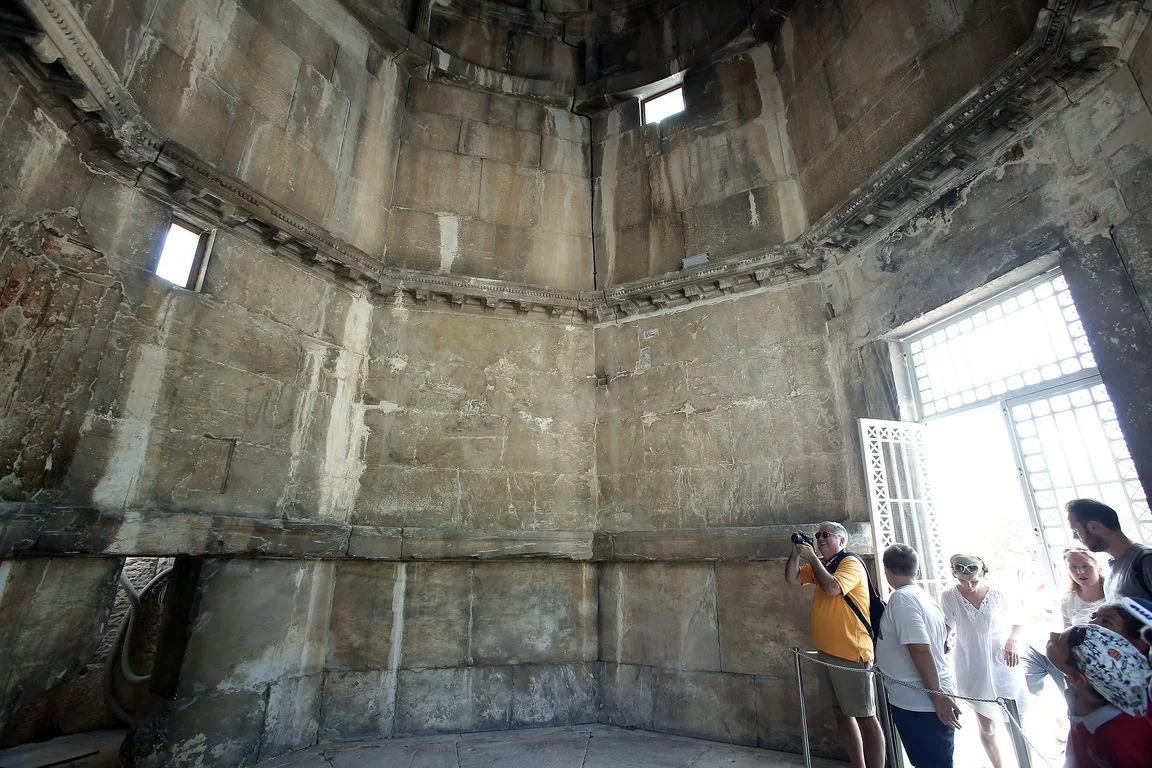The 2,000-year-old Tower of the Winds, a landmark standing inside the Roman agora in the old Athens neigbourhood of Plaka, is now open for visitors after undergoing major restoration, the Culture ministry said in a press release.

in the late 1st century BC, has been made accessible to the public for the first time in the history of the modern
Greek state, following extensive restoration work, the Ministry of Culture said yesterday. The project was
carried out with funds from the European Union’s 2007-13 NSRF/ESPA program [Credit: ANA-MPA]
The tower, built around 50 B.C. by Greek astronomer Andronikos of Cyrrhus, is 12 meters in height and 7.9 meters in diameter, has an octagonal shape and served as a timepiece. It was made of white Pentelic marble, the same used to build the Parthenon. In antiquity, it was also topped by a weathervane depicting Triton who indicated the wind direction.
1st century BC in the Roman Forum under the Acropolis hill [Credit: ANA-MPA]
Each of the tower’s sides faces a point of the compass and is decorated by friezes depicting the eight wind deities: Boreas (N), Kaikias (NE), Eurus (E), Apeliotes (SE), Notus (S), Lips (SW), Zephyrus (W), and Skiron (NW).

Restoration started on the outside walls of the marble structure in 2014, but the interior had been closed for the better part of Greece’s modern history, the ministry said. The conservation project was supported by EU funds.
Source: ANA-MPA [August 18, 2016]

